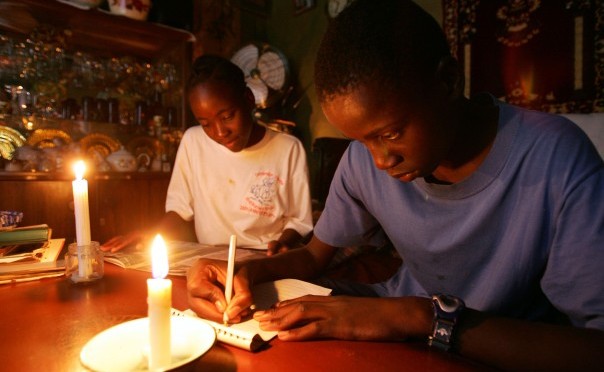The growing adoption of solar photovoltaic lamps in rural Kenya has seen mobile phone charging business operators lose customers.
The lamps that are gaining popularity in rural Kenya where electricity is largely unavailable have snatched business from mobile phone charging operators since families now charge their gadgets at home.
Before the advent of the lamps, mobile phone users in rural Kenya would travel for several kilometers to take their devices for charging at market centers where electricity is available.
The cost of charging the gadgets ranged from between 0.22 U.S. dollars and 0.33 dollars, depending on competition.
It was a booming business for mobile phone charging business operators. But entered the solar lamps and all this has now shrunk.
Hundreds of families in rural Kenya have embraced solar lamps as they seek cleaner source of light and cut expenses on kerosene which they used in lantern or tin lamps.
The solar lamps go for between 21 dollars and 46 dollars depending on the size and functions and are sold in both urban and rural towns.
The lamps that go for the about 21 dollars are only used for lighting while the other ones offer light and can be used to charge up to 10 mobile phones.
Residents can obtain the gadgets readily from shops, hawkers and supermarkets in both rural and urban areas as dealers seek to reach more buyers.
“Business has gone down. At first I thought that residents had been supplied with electricity but I found out that it is the solar lamps,” Tairus Afune, who runs a barbershop at a market center in Butere, Kakamega said on Wednesday in a phone interview.
Afune said he was initially charging up to 10 mobile phones in a day, making about 2.2 dollars.
“Nowadays if I am lucky I only charge a single mobile phone. Many families have solar lamps which have snatched business from us,” said the businessperson capturing the sentiments of his five colleagues at the center.
Joyce Nanjala, a resident of Busia Kenya, is among rural Kenya residents enjoying the benefits of solar lamps.
“It is now four months since I stopped charging my mobile phone at the market center. My nephew bought the lamps that have helped me save a lot of cash that I used to pay to charge my phone,” she said.
Besides hers, she uses the lamps to charge her husband’s and other family members mobile phones.
“All I need is to ensure that my two solar lamps are fully charged. I usually put them in the sun to charge and use them when they are full. They are the best thing to have happened to me. I do not worry anymore about the mobile phone charging,” said Nanjala.
Simon Maghanga of Clean Power Ltd, which sells solar devices, said uptake of the lanterns is growing.
“The lamps are ideal for rural areas but they can also be used in urban areas where power blackouts happen so often. One can generate income from the lamps,” explained Maghanga in a recent interview.
Only 23 percent of Kenyans and mainly in urban areas have access to electricity, according to Kenya National Bureau of Statistics.


